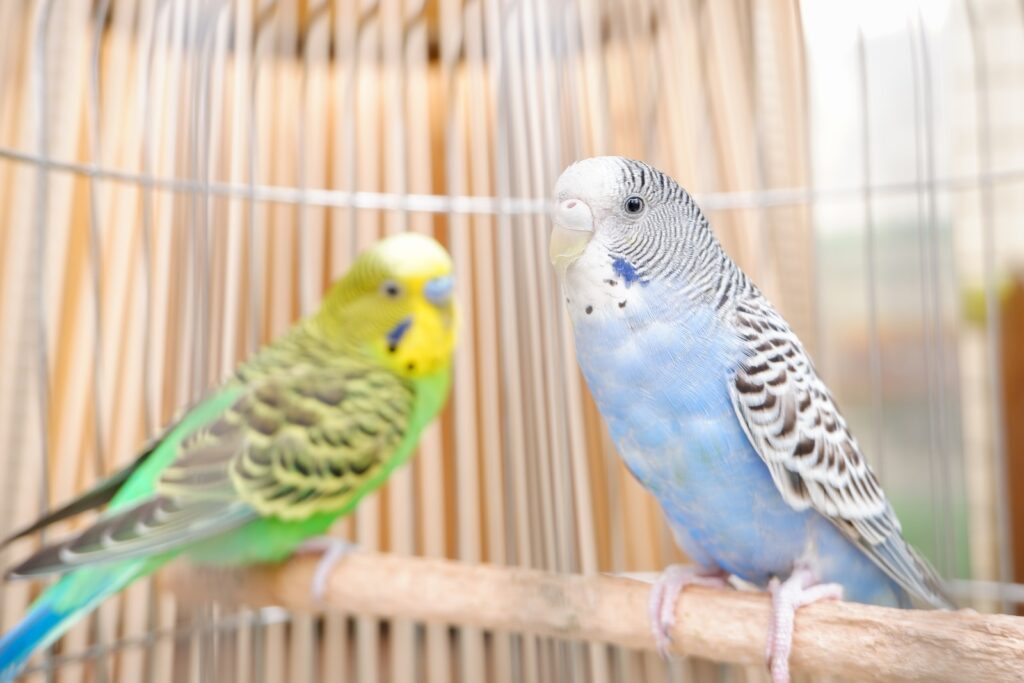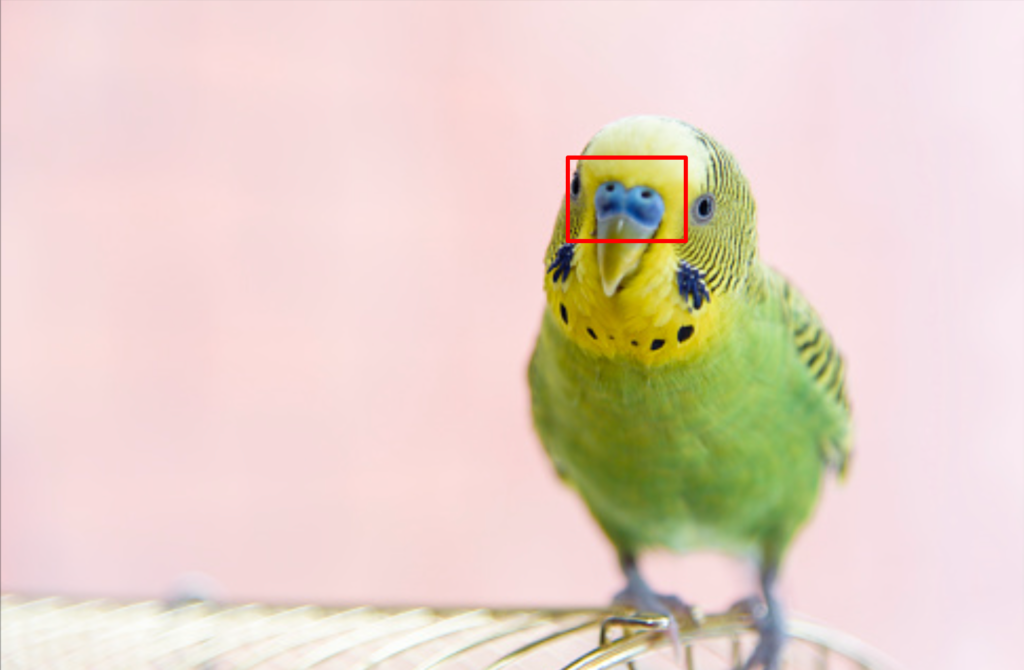If you’re planning to obtain a new pet bird, one of the most prevalent queries is whether you should choose a male or female parakeet. To make an informed judgment, you must be able to distinguish between the two genders!
To the untrained eye, parakeets all seem the same, and determining the sex of the bird can be challenging. To assist parakeet owners with this, I’ve compiled a list of tips and tactics for distinguishing between male and female birds.

So, how exactly do you have sex with parakeets? Male and female parakeets are indistinguishable until they are at least a year old. They are recognized after a year by a cere (fleshy skin above the nostrils).
A female parakeet’s cere is normally white, pale blue, or light brown. The cere is blue or a purple/blue tint on a guy.
When all you have to go on is the color of the cere, determining the sex of a parakeet can be difficult. Some people have difficulty distinguishing between colors, which may not be easy! Fortunately, a few additional methods exist to differentiate a male parakeet from a female parakeet.
There is theoretically no wrong method to sex parakeet birds, but there are various options to consider, and they do not all have to be utilized simultaneously. If you want to get technical about detecting a parakeet’s sex, you should try taking a blood sample from your pet parakeet.
How Can You Tell Them Apart?
There are various factors to consider while deciding whether to name your new parakeet Sally or Joe. You’ll first want to know how old your parakeet is.
Male and female parakeet ceres are the same color until they are a year old—a brilliant pink or light purple. After a year, the male and female cere begins to change color.
Cere

A cere is a fleshy strip of skin above the beak that surrounds the nostrils in parakeets. Even newborn birds have a cere, which may be pink, blue, or another hue that does not indicate whether the bird is male or female until the bird is completely developed.
One of the first methods is to search for white-colored rings on the nostrils of a parakeet. You’re gazing at a female bird if you observe these rings. Male parakeets lack these white rings.
- The cere of young male budgies will be pale purple or pinkish.
- A blue cere will be present in an adult male budgie. If the cere is ready to breed, it will be a vivid blue, but if it isn’t, it will be a more subtle pale blue.
- The cere of young female budgies will be pale blue-whitish.
- If an adult female budgie is broody, she will have a flaky brown cere. If she isn’t, her cere will be more brown or maybe practically white-ish. It may also have a tinge of blue, which can be perplexing, but it will never be dark blue.
By the age of 12 months, a bird has reached sexual maturity. Hormones work on the skin pigment to change it to the hue associated with the gender of the bird. Ceres in males become blue.
Estrogen causes a female’s cerebrum to turn brownish. If your female budgie was born with a blue cere, the brown impact of estrogen might cause it to fade to a faded brownish-blue or a dull grayish-green.
A cere that develops more brilliant blue in hue corresponds to a male in regularly patterned blue- or green-striped budgies. A female cere has a cere that fades and becomes a subdued shade of tan.

Another distinguishing feature of male and female parakeets is the form of their cere. Males have a more spherical, round, and nearly bulging cerebrum, but females do not.
How they bite like
The bite is the next step in determining the sex of your bird. This might be a difficult approach to discovering the sex. Therefore we recommend using food or a toy they can nibble on instead. Females are reported to bite much more forcefully than males. This is not always the case, but it is more frequent than not.
Using sound to determine the sex of a parakeet
If you cannot discern the sex of a parakeet based on the color of its ceres, or if you just want to be confident of the sex, you can utilize additional ways.
One of the most effective approaches is to use the parakeet’s voice and listen to it since males and females do sound differently.
Male parakeets, for example, are often louder than females. They will create singing noises that are louder and longer than those made by females. This is considered one of their methods of attracting mates since the singing noises they emit might be a mating call.
Furthermore, males are more inclined than females to mimic human speech and other sorts of sound.
On the other hand, female parakeets are less likely to produce the same noises as males.
They may still produce some noises, but you will note that the female does not have the melodious singing sound that the male makes. Instead, its singing has a more aggressive tone to it. However, this does not imply that the female is constantly furious.
Behavior
Male budgies are often calmer and more sociable than females. While hens can be extremely charming, they are more aggressive towards outsiders, more likely to protect their area, and will chew on items more.
This is because they have the urge to build and protect their nest. Males also talk a lot more than females. Only a small percentage of hens talk like men.
Males, as previously said, are also more sociable. They are more likely to bond closely with another man in the group, but females rarely have the best female buddy.
Of course, in terms of behavior, it is easily adjustable and hence not always trustworthy. If you have numerous budgies, you’ll observe the above more readily. It’s also conceivable that you have a female budgie who behaves like a male. This is because she has spent most of her life surrounded by guys of her species and has learned how to act from them.
The head and the body
Remember that sexual dimorphism refers to the physical structure and outward appearance variations between male and female birds. This is where your eyes will be trained to detect such distinctions. Male parakeets are bigger and heavier than female parakeets when they are healthy and mature.
Males have a greater physical structure and are stronger than females. When you put them side by side, the male is the bird with the bigger head. Male size can be intentionally lowered owing to malnourishment, stunting, or inbreeding. The body feathers provide another hint when properly sexing budgies.
Male parakeets frequently have significantly brighter colors in their body feathers than females.
However, there will be some parakeets with naturally subdued or non-vibrant feather colors.
These parakeets are either inbred or have non-wild-type feather colors like albino, lutino, sky blue, pale yellow, light green, or cinnamon.
Your Parakeet’s Feet Color
Analyzing your parakeet’s legs and feet is a simple way to establish its age, especially if it is less than a year old. Adult male parakeets over the age of one year generally have brilliant blue legs that resemble their cere. Female parakeets above the age of one year have pink or brown legs simultaneously.
Laying eggs
Only female budgies lay eggs, like with all other bird species. Female parakeets lay their eggs shortly after mating and normally begin laying eggs during the spring season.
Females will deposit their eggs with or without the presence of the male parakeet.
It’s very uncommon for eggs to be laid every other day until all of them are laid.
It should be emphasized, however, that the absence of egg-laying does not imply that your pet parakeet is a male. Female budgies do not produce eggs for a variety of reasons. One of the reasons is that they are either too young or too elderly.
Endoscopic
Endoscopic or surgical sexing is another method for determining a parakeet’s gender. In this approach, your bird pet is sedated for an endoscope to be inserted via your parakeet’s abdomen air sacs and skin.
An endoscope uses fiber-optic imaging to see a bird’s interior organ anatomy.
On the other hand, the air sacs are huge air chambers with thin, translucent walls. The endoscope allows you to see your parakeet’s whole organ anatomy, including the reproductive organs.
The veterinarian can readily determine the gender of your parakeet if you consent to place it under an endoscopy. This approach is extremely accurate and quick when managed by a trained veterinarian. Furthermore, the endoscopic approach allows you to detect any other health concerns with your avian companion.
However, unlike DNA, endoscopic sexing is more costly and potentially dangerous to your parakeet’s health. Internal organ trauma, rib fracture, air sac infection, internal abdominal cavity infection, bleeding, and other health hazards are among them.
DNA analysis
If you’re still not sure, you may get a feather DNA test done.
Sexing with Feathers
Feather sexing a parakeet is similar to blood sexing, except that the sexing is done using DNA analysis on tissue obtained from the parakeet’s feathers rather than blood. For precise test results,
Feather sexing should be done on newly plucked feathers from the bird’s breast, as molted feathers do not contain fresh tissue samples. Feather sexing may be preferable since it is less traumatic on the bird.
Sexing with Blood
Sexing a parakeet using a blood sample is just as accurate as sexing a parakeet using feather tissue. This method of sexing does have some negatives, including the necessity for a veterinarian to acquire the blood sample, which can be distressing for your cat.
However, once the blood is acquired, it may be tested not just for sex but also for potential genetic disorders.

jay
I am not an expert, just passionate. I own a Parakeet and I have been in your shoes. If you are currently looking for information, I've done the research and that is the reason why I created this website.
